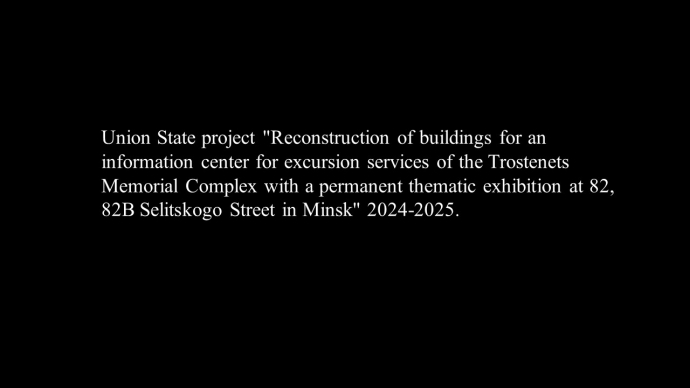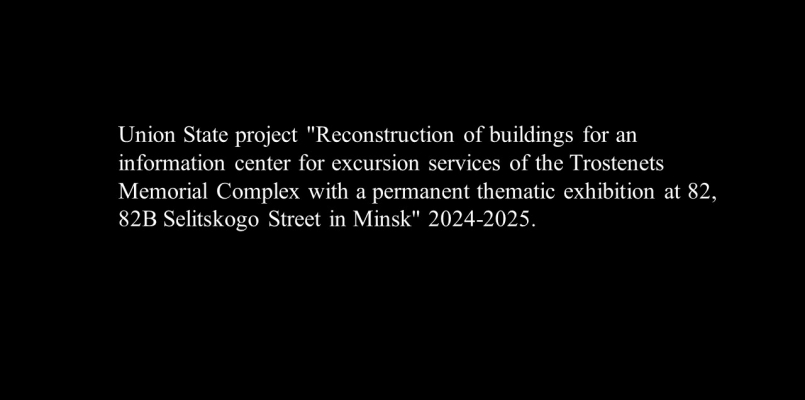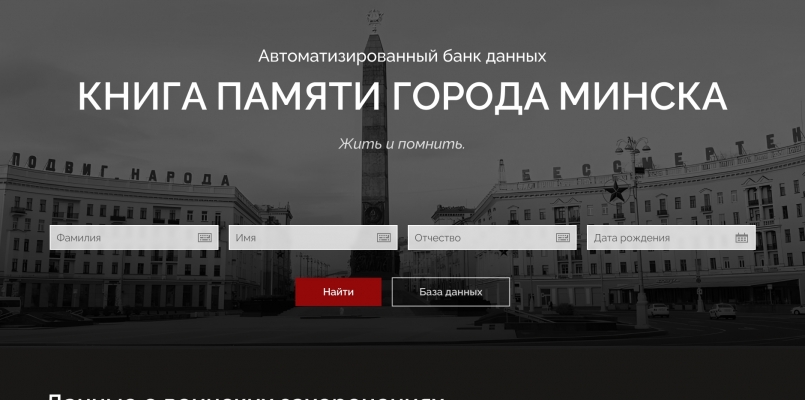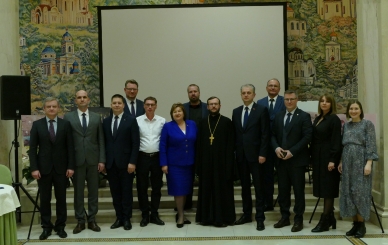
Implementation Period: 2024–2026.
Funding Amount: 652 million RUB.
Historical Context:
Trostyenets stands as one of the largest "death factories" established on the occupied territory of the former Soviet Union and Europe. In terms of victim numbers, the Minsk Trostyenets site ranks among the four most notorious sites of mass extermination during World War II. It holds the fourth position in terms of documented victims, following the largest Nazi death camps: Auschwitz, Majdanek, and Treblinka.
Project Objectives:
1. Perpetuating the memory of the victims of the Trostyenets death camp.
2. Honoring the heroic deeds of the Soviet people in the fight against Nazism.
3. Countering attempts to falsify history and distort historical facts.
Key Project Tasks:
1. Establishing a Permanent Exhibition.
Development and opening of the historical demonstration hall titled "Thematic Multimedia Exhibition: History of the Trostenyets Death Camp. 1941-1944".
2. Preserving Evidence of Genocide.
Documenting and safeguarding information about the atrocities committed by Nazi criminals and their collaborators, aimed at the systematic physical extermination of the inhabitants of Belarus – recognized as genocide.
3. Modern Transmission of Memory.
Utilizing contemporary interactive methods to convey the historical memory of the victims of Nazism at the Trostenyets death camp.
4. Identifying Victims.
Collecting information about unknown victims of the camp and creating the electronic database "Book of Remembrance for the Victims of the Trostenyets Death Camp".
5. Organizing Historical Enlightenment.
Implementing awareness programs to inform the public about the events of the Great Patriotic War and the genocide of the Soviet people.
Project Details:
1. Establishment of an Administrative and Scholarly Base.
The Information Center will accommodate administrative, scholarly, and technical personnel of the Trostenyets Memorial Complex. This infrastructure provides essential conditions for the complex's sustainable operation and the advancement of research activities.
2. Creation of a Scholarly Center and Unified Digital Documentation Space (UDDS).
The project includes forming a specialized scholarly center equipped with advanced information technologies. This will enable the research team to conduct in-depth studies on the Trostenyets death camp within the context of the Great Patriotic War and implement the concept of a unified digital documentation and educational ecosystem. The UDDS will integrate information not only on the Trostenyets Death Camp but also on other sites of forced detention across Belarus and Russia during 1941-1944.
3. Implementation of the Visitor Concept with the Information Center as an Introductory Hall.
All guided tours commence in the Historical Demonstration Hall. Visitors first engage with the permanent thematic multimedia exhibition, "History of the Trostenyets Death Camp. 1941-1944," utilizing highly realistic artistic and multimedia tools to create an immersive environment. Following the exhibition, visitors proceed along the purpose-designed "Path of Remembrance" to the complex's key architectural feature – the "Gates of Memory" monument – before continuing to the main tour routes.
4. Development of a Representative Space for Memorial Events.
The project includes creating a specially equipped reception area designed for hosting official commemorative ceremonies, meetings with victims' relatives, and engagements with international delegations. This initiative aims to strengthen the Trostenyets Memorial Complex's status as an international site of reverence.
Expected Project Outcomes:
1. Establishment of a Modern Multimedia Complex.
A permanent, high-quality artistic multimedia exhibition dedicated to the history of the Trostenyets death camp and the genocide of the Soviet population during the Great Patriotic War, utilizing contemporary methods of historical presentation.
2. Creation of a Documentation and Remembrance Center.
Development and operation of a modern documentation center, featuring an updatable digital archive (the electronic "Book of Remembrance for the Victims of the Trostenyets Death Camp") to systematize, preserve, and research information on Great Patriotic War victims.
3. Strengthening Historical Truth and Countering Falsification.
The project will significantly contribute to preserving the historical memory of Nazi crimes and Soviet heroism, while effectively countering attempts to falsify the history of the Great Patriotic War and the genocide perpetrated by Nazi criminals.
4. Elevating the Memorial's International Stature.
Implementation will reinforce the Trostenyets Memorial Complex as one of Europe's foremost sites commemorating Nazi victims – a transnational symbol of reverence – and create conditions for hosting large-scale international memorial events.
5. Advancing Scholarly and Educational Activities.
Provision of organizational and infrastructural foundations to deepen scholarly research on the camp's history and expand educational outreach informing the public about the tragedies of war and occupation.
6. Enhancement of Tour Services.
The new center will enable the provision of permanent, qualified, and academically grounded guided tours for visitors to the Trostenyets Memorial Complex.
7. Patriotic Education of Youth.
The exhibition's modern multimedia solutions will foster effective patriotic education for younger generations based on authentic historical facts.
Significance for the Union State:
This project is vital for preserving historical memory, perpetuating the victorious nation's heroism, consolidating societal resolve against revisionism of World War II outcomes, and cultivating civic values rooted in respect for historical truth.
If you wish to assist in the implementation of the project, please contact us by e-mail: hp.direction@gmail.com, or by contact numbers: +375(17)3893506, +375(17) 3893505







